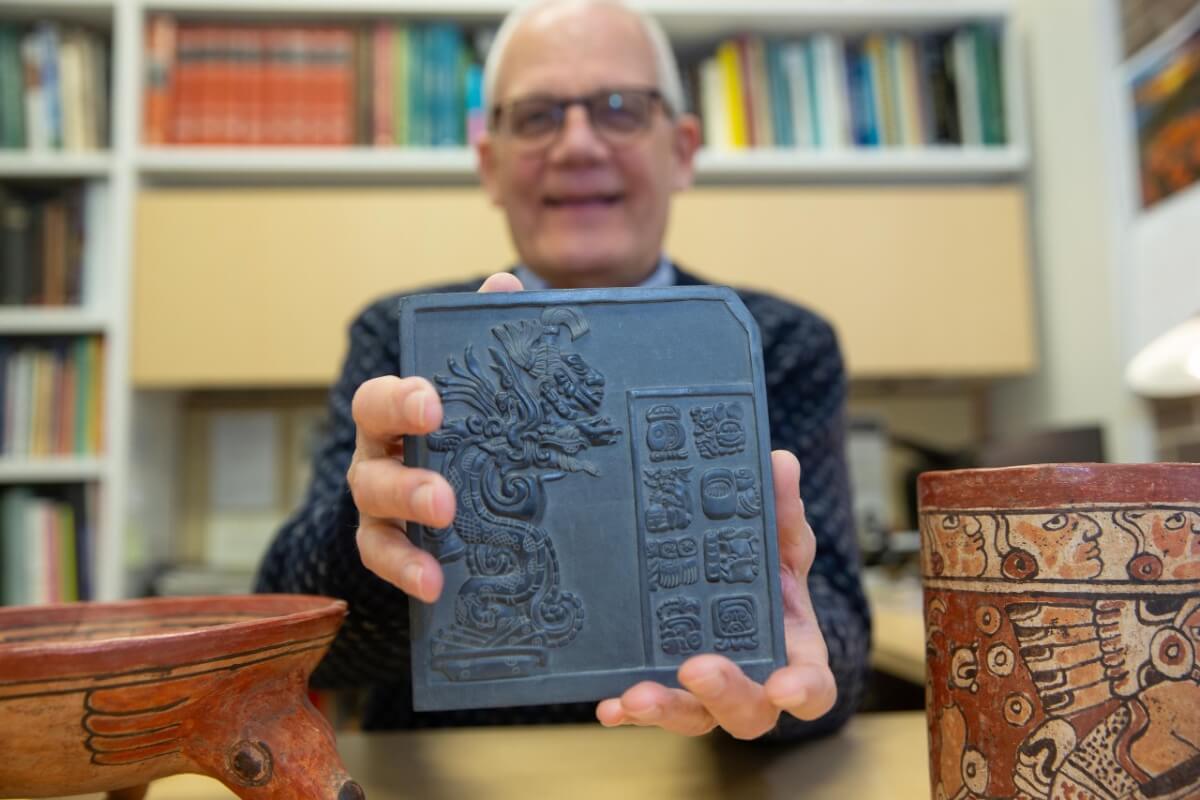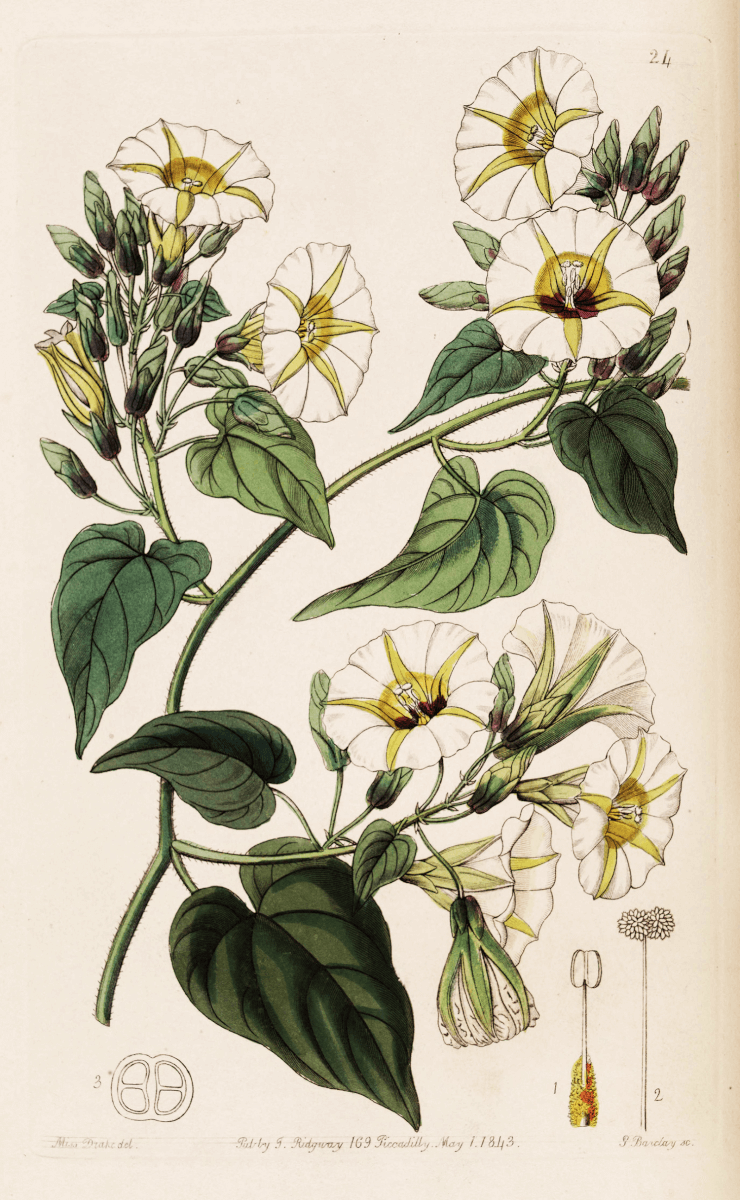CINCINNATI — Think sports fans today have some crazy rituals? A new study suggests they don’t hold a candle to the psychedelic ceremonies taking place on the ballcourts of the ancient Mayans! Researchers have found evidence of ceremonial offerings buried under an ancient Maya sports arena, including a psychoactive plant containing similar compounds to LSD.
Archaeologists at the University of Cincinnati say this remarkable find offers a rare glimpse into the spiritual practices of the ancient Maya, a civilization that flourished in Central America thousands of years ago. The Maya are renowned for their sophisticated cities, intricate calendar system, and impressive feats of astronomy and mathematics. However, their religion and rituals have always been shrouded in a degree of mystery.
Using an environmental DNA analysis published in PLoS ONE, researchers identified four plants used in ceremonial rituals in the 2,000-year-old city of Yaxnohcah. Those plants, known for their religious associations and medicinal properties, had been found underneath a plaza floor upon which a ball court was built. The team was able to identify the plants as xtabentun, a hallucinogenic morning glory; lancewood, used for making spears; chili peppers, known for their medicinal and religious properties; and jool, whose leaves were used to wrap ceremonial offerings.
The presence of these specific plants together in a single, concentrated sample suggests they were intentionally placed as part of a blessing ceremony. Study authors explain the ancient Maya likely made a ceremonial offering during the court’s construction.
“When they erected a new building, they asked the goodwill of the gods to protect the people inhabiting it,” UC Professor David Lentz says in a university release. “Some people call it an ensouling ritual, to get a blessing from and appease the gods.”
Between 2016 and 2022, researchers worked at Yaxnohcah in Campeche, about nine miles north of the border of Guatemala. This is where they excavated the small area of a ballcourt.

The ancient Mayans were known to play several ball games. One game was called pok-a-tok, which had rules similar to soccer and basketball. Played on elaborate stone courts with sloping walls and elevated rings, players attempted to get a ball through a ring or hoop on a wall. These games were more than mere sport; researchers believe they were symbolic reenactments of cosmic battles between the forces of life and death, light and darkness. The stakes were high, with the losing team sometimes paying the ultimate price in human sacrifice.
By burying psychoactive seeds and other sacred plants under the court, Maya priests may have been consecrating the site and imbuing the games with spiritual power.
UC Professor Emeritus Nicholas Dunning adds that when buildings were expanded or repurposed, as with the ballcourt, the ancient Maya usually made offerings to bless the site. In many cases, archaeologists have found ceramics or jewelry in these offerings, in addition to plants of cultural significance.
“We have known for years from ethnohistorical sources that the Maya also used perishable materials in these offerings, but it is almost impossible to find them archaeologically, which is what makes this discovery using eDNA so extraordinary,” Prof. Dunning explains.
Due to quick decomposition, it is very rare to find the remains of ancient plants in tropical climates. The star of the botanical bundle was undoubtedly xtabentun (SHTAH-ben-toon), a species of morning glory known for its potent psychoactive properties.
Today, xtabentun is used to make a liqueur flavored with honey from bees that feed on the plant’s flowers. However, this innocent-sounding beverage has a darker side. The plant, formally known as Ipomoea corymbosa, contains potent compounds closely related to the psychedelic drug LSD. When the Aztecs encountered the plant, which they called ololiuhqui, they quickly recognized its power to induce visions and hallucinations. Priests would consume the seeds in a sacramental beverage, believing it allowed them to communicate directly with the gods.


While the Aztec use of xtabentun is well-established, this is the first hard evidence of the plant in an ancient Maya context. Tantalizing clues have long existed in Maya art and writing – swirling, dreamlike imagery that seems to hint at altered states of consciousness – but until now, the smoking gun has been elusive.
The presence of chili peppers in the offering is also significant. Far more than a culinary spice, chilis played a key role in Maya healing rituals and religious offerings. The bundle also contained traces of jool, a plant whose bark was used to make twine and whose leaves were used to wrap sacred objects. Lancewood, a tree whose strong, flexible wood was prized for making spears, rounded out the offering.
Botanist and UC Associate Professor Eric Tepe notes finding evidence of these plants together in the same tiny sediment sample is extremely telling. He has studied modern plants in the same forests once traveled by the ancient Maya all those years ago.
“I think the fact that these four plants which have a known cultural importance to the Maya were found in a concentrated sample tells us it was an intentional and purposeful collection under this platform,” Prof. Tepe comments.
Study authors add it was a challenge to try to interpret a collection of plants through the opaque lens of 2,000 years of prehistory. Still, Prof. Lentz says these findings help add to the story of this sophisticated ancient culture. It’s believed the ancient Maya devised water filtration systems and employed conservation-minded forestry practices. On the other hand, they were also helpless against years-long droughts and likely deforested vast tracts for agriculture.
“We see the yin and yang of human existence in the ancient Maya,” Prof. Lentz concludes. “To me that’s why they’re so fascinating.”
This research was carried out through Mexico’s National Institute of Anthropology and History in unison with researchers from the University of Calgary, the Autonomous University of Campeche, and the National Autonomous University of Mexico.

